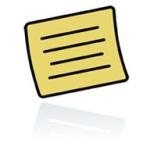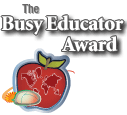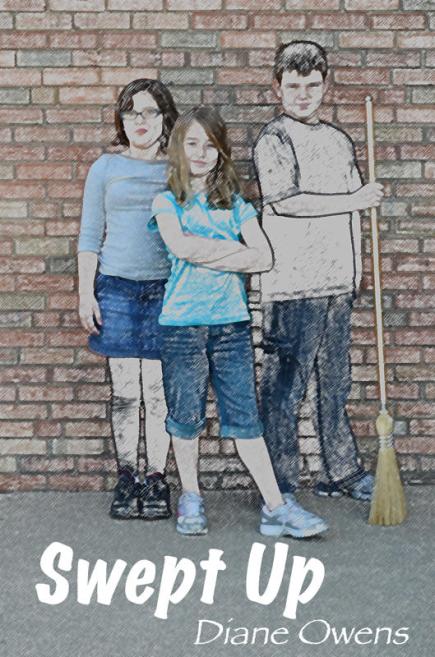
I love informative writing. Not only do you get to entertain your readers, you also get to share useful information with them.
Informative papers are fun to write, too, as long as you keep your readers in mind. Just like writing stories, your job is to make readers feel something – thrilled, curious, concerned, or even angry. Facts don’t have to be boring, you know, not when you’re in control! Help your readers remember and enjoy the information you share by showing them how un-boring you can be. Here’s how:
Plan
Get Excited
Spend some time picking out your topic. Choose something you’ve always wondered about – or better yet, pick something you worry about or dream about, or something you’ve just discovered and want to share with others. If you truly care about your topic, you’ll turn what might seem like a chore into an adventure.
Some Ideas to Get You Started
What do you find interesting? Science, history, sports? Geography or other cultures? Any thing in any subject makes for a great topic – as long as you’re interested and excited about it. Maybe you’d like to write about a person you admire, or maybe you know how to do something, or maybe you’d like to learn how, then share what you learn with your readers.
Slant It, Narrow It, Focus It
Whatever you decide to write about, it will be a lot more fun to read and write if you give your topic a unique spin. To do that, figure out why you’re excited about it. Be as specific as you can.

For example, maybe you’re terrified of spiders. Terror is a form of excitement and anything you feel strongly about makes for a good topic. But what, exactly, terrifies you? Maybe, like me, you realize it isn’t the spider that horrifies you but the spider’s web. It’s so strong and sticky, those poor bugs don’t stand a chance. Maybe it gives you goose bumps to think about getting caught in one. What makes it so sticky? So strong? Just how strong and sticky is it, anyway? If your mind is racing with more questions you want answered, maybe you’ve just found a topic to write about. If it isn’t, maybe you should read the next paragraph.
 Let’s say you’ve always admired Martin Luther King or Lady Gaga or the Wright Brothers. Why? Is it his dedication or her craziness or their vision? Maybe it’s something else entirely. Whatever it is, narrow it down to one trait. Then research. See if you can find moments in their lives – maybe from their childhoods – that show this trait shining through.
Let’s say you’ve always admired Martin Luther King or Lady Gaga or the Wright Brothers. Why? Is it his dedication or her craziness or their vision? Maybe it’s something else entirely. Whatever it is, narrow it down to one trait. Then research. See if you can find moments in their lives – maybe from their childhoods – that show this trait shining through.

Or maybe you’ve just learned how to build a mouse trap. Maybe you’re really excited about this trap because it let you catch the mouse without doing it any harm. If that’s important to you, it might be important to your readers too. You could share how you did it then research other ways to catch mice harmlessly.
Narrowing your topic and answering a few specific questions gives you more room to create a mood, set a tone, add colorful details and examples. It also gives you room to share your excitement, add some humor or some drama. Your paper will be more entertaining to read and a lot more fun to write.
Organize
List every interesting, colorful thing you can think of about your topic. What made you excited enough to choose it? What would excite or fascinate your readers? Label each of these ideas with a single word or a short phrase. If you know exactly the type of information you’re looking for, your research will go a lot faster because you’ll be able to stay on track.
 Pick your favorite, most exciting ideas then write the word or phrase you’ve assigned to that subtopic on a note card or a strip of paper. Make a separate note card or paper strip for each of your ideas or subtopics. Usually, three to five subtopics will be enough. You’ll probably write one to three paragraphs for each one. But of course, this all depends on your specific assignment, if you have one.
Pick your favorite, most exciting ideas then write the word or phrase you’ve assigned to that subtopic on a note card or a strip of paper. Make a separate note card or paper strip for each of your ideas or subtopics. Usually, three to five subtopics will be enough. You’ll probably write one to three paragraphs for each one. But of course, this all depends on your specific assignment, if you have one.
Different Ways to Organize and Categorize
Now it’s time to figure out how you’re going to order your subtopics. The main point of organizing information is to make it easy for your readers to follow along.
Maybe you already know how you want to begin. Usually you’ll want to start with the subtopic that is most likely to hook or grab your readers. If that’s the case, then see if this beginning would naturally lead to a different note card.
Ask yourself how you would expect to see the ideas on your note cards. If you’re telling your readers how to do something, you’ll want to list the steps in order. If you’re writing a biography, you’ll probably want to list the events of that person’s life in the order in which they happened. If you’re writing a fact piece, you may want to go from general information to more specific information.
If you’re not sure about the order right now, don’t worry about it. Your research will probably help you figure this out.
Research
It’s time to find out about your subtopics. Information can come from books, magazines, or the Internet.
If you’re going to use the Internet, please remember that you can’t always trust what you’ll find there. Google is an excellent way to find information fast but if you’re going to do a Google search, I highly recommend you use Google Safe Search. This is Google’s way of keeping the Internet a safe place to be.
I also recommend using the Internet Public Library. IPL’s Kids Space has plenty of information written in a way that you’ll appreciate. There are lots of other places on the Internet to get information. Just make sure you have a good reason to trust it.
What to Do If You Find Something Unexpected

Sometimes your research may lead you in a totally different direction. You might find that what you think will lead to a lot of interesting facts doesn’t turn out that way. Or you may discover interesting facts that don’t fit into your plan for this paper. That’s okay. You can always change your subtopics – create new ones or drop old ones – if you find something that excites you more. But if you change your subtopics, make sure you really understand what the new topics are. Name the new subtopics with a word or short phrase so they have a firm place in your mind. Otherwise, you may constantly get off course and never finish your paper!
Taking Notes
Some sources you find may cover more than one of your subtopics. When you’re taking notes, use different note cards to separate this information to fit your subtopics. Write the name of the subtopic on top of each card. Then you can group your note cards into subtopic piles. This will help you see how much information you have for each subtopic and it will also make it easy for you to find the information you need when you start writing.
Use your own words when taking notes about what you’ve read. Copying word for word from your source is plagiarism. You wouldn’t want anyone stealing your words; make sure you don’t steal anyone’s either.
At the bottom of the note card, write down where the information came from. Citing sources may be a requirement if you’re doing an assignment but it’s also a good idea to keep track in case you need to check the source for additional information. There are different ways you can cite sources but here’s a list of the most common ways:

For books:
Include the author’s full name, followed by a comma, the name of the book in italics, followed by the publisher’s information in parentheses. For the publisher, include the city and state, followed by a colon, name of the publisher, followed by a comma, year the book was published, followed by a comma and the page numbers of where the information is located in the book. End with a period.

For magazines:
Include the author’s full name, followed by a comma, the name of the article in quotation marks, followed by a comma, name of the magazine in italics, followed by a comma, month and year the magazine was published, followed by a comma and the page numbers of where the information is located in the magazine. End with a period.
For web sites:

Include the author’s full name (this isn’t always provided), followed by a comma, the name of the site, followed by the company or organization that owns it (if there is one), followed by a comma, the name of the page in quotation marks and the date the particular page was published or updated (if you can find it). Include the site’s URL (the address you see in your browser when you’re on the site.) If the site doesn’t have a publication date, use the date you visited the site by writing “accessed” followed by the date.
A Word About Pictures
A picture’s worth a thousand words. You can find a lot of really great pictures on the Internet, anything from photographs to images to clip-art to diagrams. But if you’re going to use it to illustrate something in your paper, make sure it’s a royalty-free image. Royalty-free means that whoever took the picture or created the artwork is allowing other people to use it.
To get the most out of your images, let your readers know why you included them with your paper by writing a caption for the image. In the caption, explain what’s happening in the image and identify the people if you can. Write your caption using the present tense for your verbs.
Write
Use the tone that works best for your audience and the point you want to make. Did you choose this topic because you find it exciting and thrilling? Write the information in a gripping, dramatic way that makes your readers feel like they’re right there experiencing it. Or maybe you find the topic hilarious – go ahead and make your readers laugh. Or maybe the topic upsets you – let your feelings shine through and get your readers upset too. Remember, informative papers are more fun to read (and to write) when you connect with your readers and get them involved.
Effective Beginnings

In the beginning, let your readers know what the paper is about but do it in a way that gets them involved. Share an intriguing fact or ask an intriguing question to get them curious. If you can make them wonder, they’ll keep reading to find out. If you’re writing a biography, let the person you’re writing about share a startling comment or an unexpected fact. If you’re writing a fact piece, describe a situation or a scene that puts readers right in the middle of something that relates to the topic. For instance, write a scene that describes what it might feel like to be the bug stuck inside that strong and sticky spider’s web. Or maybe you have a personal experience that relates to your topic. Share that experience in a way that makes your readers feel like they are right there with you.
The key is to make your readers feel something – curious, concerned, happy, thrilled – whatever emotion works best for your paper and the point you want to make with it.
The other key is to do this fast. Set the scene, build curiosity, arouse those feelings in one or two paragraphs.
Interesting Middles
Now it’s time to dig in to your subtopics and share all those interesting facts you found in your research. The most important point about middles is keeping your readers interested. Keep appealing to their imaginations, their curiosity, their sense of humor and mostly their feelings. Keep them involved by keeping them in mind as you write.

The second most important point about middles is making sure your readers don’t get lost or confused. You want all their attention on those intriguing facts you’re sharing – not on trying to figure out where you’re headed. Organizing your thoughts and ideas in a way that’s easy to follow is the key.
To keep your thoughts and information organized, start a new paragraph whenever you’re giving new information – a new event or situation or a different idea or subtopic. Begin each paragraph with a sentence that introduces the main idea or point. This lets readers know what the paragraph is about. These first sentences are called topic sentences. You can test your topic sentences by reading only the first sentence of each paragraph. If this version of your paper still makes sense to you, then your topic sentences are doing their job.
Make it easy on your readers to follow along when you switch from one subtopic to the next by linking your subtopics together. You can do this by using transitions.
Transitions are words or phrases that let readers know you’ve covered one subtopic and are moving on to the next. Some of the most common transitions are for example, also, another, next, since, because, therefore, however, on the other hand, or meanwhile. Usually these words will naturally come up as you write, because our minds use transitions to organize information too. If you find yourself struggling too much over transitions, you may need to give more thought to how you’ve organized your subtopics.
Satisfying Endings
Whew, you’re almost done! Seriously. The only thing your ending needs to do is summarize what your paper was about. The best endings are extremely short, no longer than a paragraph. If you can summarize your paper in one sentence, even better! Just keep in mind that what you’re really trying to do here is help your readers understand the basic point of your paper.
Now go take a break – you deserve it. Whenever you’re ready, come on back and follow the link to Revise and Edit. I’m going to show you some ways to make this paper really shine.




